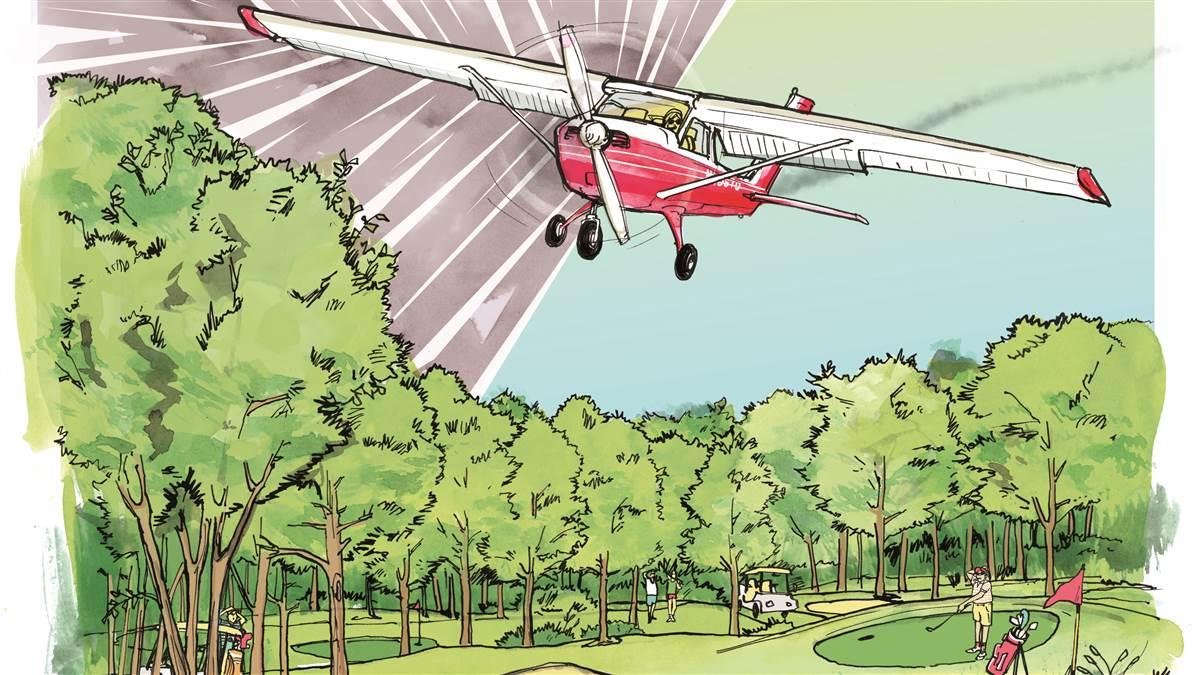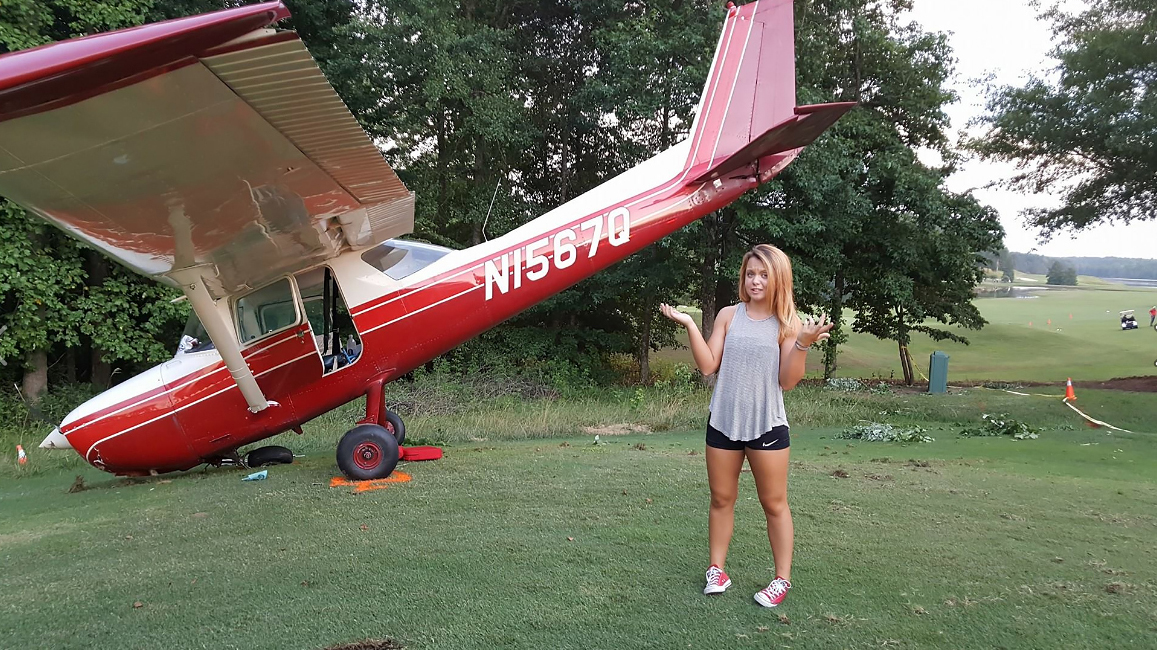Birdie at 11
Reacting to an engine failure after takeoff

Her father, an experienced mechanic and pilot, and others praised the young woman for resisting the urge to turn back to the airfield. If not for the hilly tee, which collapsed the aircraft’s nose gear after touchdown, the little Cessna would have come out as unscathed as Lund.
Lund had just performed a straight-out departure from Falcon Field’s Runway 31 and “was switching my radios over to Atlanta Approach” when she said “the engine just sputtered” as the aircraft neared 400 feet agl. “The rpm dropped, then they kind of went back up, and then it [the engine] just quit,” she said.
That’s when Lund’s instruction kicked in. She had logged about 45 hours of dual instruction and practiced “power-off 180s and engine failures all the time, but I’ve always had someone pull the throttle when I’m over the runway and then landed on the runway.”
This time it was different. “I didn’t really have time to freak out, and I figured I’d land the airplane anywhere I could,” she said.
The young pilot knew she didn’t have enough altitude to make the 180-degree turn back to the airfield behind her, so she “looked for a place to land and tried not to stall the airplane.” A lake immediately in front of her complicated the decision.
Lund pointed her aircraft at a clearing because she “didn’t want to go swimming in the lake below me.” Golfers playing a nearby hole scrambled out of the way as the Cessna glided down. “In my mind I was thinking, ‘I hope I don’t hit the trees.’”
Lund says she landed fine but “was coming in really fast. When I came in, I hit a hill and it launched me back in the air and then a wing tip contacted a tree and that spun me around.” When the 150 contacted the ground “it hit on the nose” and collapsed the front gear. After the aircraft bounced to a halt, Lund said she released her safety harness and “kind of fell out of the airplane.” By that time a high school friend playing the golf course had already called 911, although he didn’t know it was Lund.
Kevin Lund complimented his daughter and explained that she had little time to react. He said an NTSB examination determined that a cracked intake valve lodged itself in the exhaust port and triggered a rapid set of events that led to the engine failure.
“Once that intake valve lets loose, you have reverse flow through the engine and the other three cylinders get completely starved [of fuel],” he said. “That cylinder is still producing some pressure but it’s back-pressuring the induction system and putting reverse flow though the carburetor,” literally choking the engine. “It’s so unusual to have an intake valve break. I flew the 150 literally two and a half hours before Sierra did and it ran perfectly for me.”
As a parent, he said, “Every time she went up it would always weigh on my mind if she’d make those decisions,” but her quick reaction under pressure “sealed the deal in my mind.”
 Enthusiasm for aviation has always run in the family. “I kind of got the bug early on and became an aircraft mechanic by trade,” Kevin Lund said. “I recently bought a couple of airplanes and got my [pilot] license. Then Sierra became interested and the next thing you know, she got the desire to get her license, too.”
Enthusiasm for aviation has always run in the family. “I kind of got the bug early on and became an aircraft mechanic by trade,” Kevin Lund said. “I recently bought a couple of airplanes and got my [pilot] license. Then Sierra became interested and the next thing you know, she got the desire to get her license, too.”
The young woman was “at the airport almost every day” and her father said Sierra was thrilled when she began flight training lessons. “She has more of a mechanical mind and can explain how an engine works.”
When asked what she would change if she had to do it all over again, Lund said she would “probably put flaps in if I had time, but I didn’t really have that much time. It felt like I was landing perfectly fine but I was just coming in really fast.” Her advice for other students facing a similar emergency is to “fly the airplane until it can’t fly any more—that’s pretty much it—and stay calm.”
“We’re definitely happy with the outcome,” Lund’s father said. “She made all the critical and correct decisions at the right time.”



